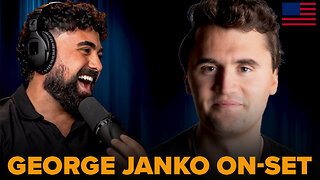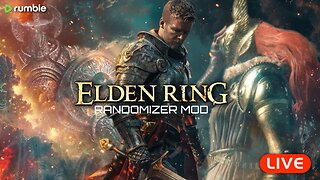Osteoarthritis of the knee part 1 knee anatomy -human body animated anatomy
hip_labral_tear_01_hip_anatomy
===
[00:00:00] Hello, my name is Nula Heats Blink, and I'm a physical therapist specializing in outpatient orthopedic and sports medicine. Today I'll be talking about anatomy of the hip. The hip joint is made up of a ball and socket synovial joint formed between the femur and pelvis. The acetabulum is the socket in the pelvis formed by three ino bones, the ileum, the ischium, and the pubs.
The acetabulum faces laterally and also slightly inferiorly and anteriorly. It is a round cup shaped structure where the femur articulate. At the top of the femur is a rounded protrusion called the femoral head, which articulates with the acetabulum. Both the femoral head and the acetabulum are covered by articular cartilage, a smooth white tissue that covers the bones, allowing frictionless gliding to occur.
The labrum is a fibro cartilaginous rim attached to the margin of the acetabulum. It is horseshoe shaped and the ends are connected at the [00:01:00] acetabular notch via the transverse ligament. To form a complete circle, the labrum deepens the acetabular cavity to enhance joint stability. The labrum also creates a seal that helps keep synovial fluid within the articular cartilage, preventing direct contact between the femoral head and the acetabulum.
The labrum is wider and thinner in the anterior region of the acetabulum and thicker in the posterior region. There are several ligaments that connect the femoral head to the acetabulum to help provide further stability to the hip joint and restrict the joint from going into extreme positions. The most notable ligaments in the hip joint are the ilio femoral ligament, the pub femoral ligament, the ichi femoral ligament, and the ligamentum Terris.
The ilio femoral ligament is the strongest hip ligament and connects the pelvis to the femur at the front of the joint. This ligament is y shaped and often referred to as the Y ligament of Bigelow. It attaches to the anterior inferior iliac spine [00:02:00] and the lower part of the inter troon arteric line. It prevents hyperextension of the hip joint during standing by holding the femoral head within the aceta.
The is femoral ligament reinforces the capsule posteriorly. It originates on the isga part of the acetabular rim and spirals super laterally to the neck of the femur. This ligament also prevents hyperextension and holds the femoral head within the acetabulum. The Puba femoral ligament is attached to the Obterator crest and the superior Remus of the pubis and blends with the joint capsule.
The Puba femoral ligament reinforces the capsule anteriorly and inferiorly, and prevents over abduction of the hip joint. Now let's talk about the musculature of the hip. There are 22 muscles acting on the hip that contribute both to the stability and mobility at the hip. The musculature can be broken down into four quadrants anterior, posterior.
Medial and lateral. The anterior quadrant consists of the hip [00:03:00] flexors, the ilio, soaz made up of the iliacus, and soaz is the primary flexor of the hip. The rectus for mour and sartorious also contribute to hip flexion. The posterior quadrant consists of the hip extensors. The primary extensor is the gluteus maximus.
In addition, the hamstring also works to extend the hip. The medial quadrant consists of the adductor group. These are five muscles that include the adductor longus, adductor, brevis, adductor. Pec, Tinius and Gracillis. The lateral quadrant consists of the abductor muscles. The primary muscles that abduct the hip are the gluteus meatus and the gluteus minimus.
In addition, the tensor, fa and gluteus maximus contribute to hip abduction. Deep in the lateral and posterior quadrants are six muscles that externally rotate the hip. These consists of the paraform, obterator, internists, and exter. Jamis, superior and inferior, and the quads fmo, [00:04:00] there is no muscle that acts to primarily internally rotate the hip.
The two muscles that contribute to the action of internal rotation are the anterior portion of the gluteus medias and the tensor fa. That brings us to the end of the discussion. Thank you for joining us today.
-
 2:56:24
2:56:24
The Charlie Kirk Show
3 hours ago2016 Redux + George Janko On-Set | Habba, Kassam, Janko | LIVE 6.10.24
72K19 -
 LIVE
LIVE
SilverFox
15 hours ago🔴LIVE - Elden Ring RANDOMIZER Mod - Part 2
474 watching -
 59:36
59:36
The Dan Bongino Show
6 hours agoOperation DUMP Joe Biden Has Begun (Ep. 2267) - 06/10/2024
419K937 -
 1:41:30
1:41:30
Steven Crowder
6 hours agoTrump Trial Turmoil as Juror’s Cousin F*cks Deep State | GUEST: Breanna Morello
287K439 -
 1:47:52
1:47:52
Mostly Sports With Mark Titus and Brandon Walker
18 hours agoMostly Sports With Mark Titus and Brandon Walker Presented by Jägermeister | EP 185 | 6.10.24
34.1K -
 1:29:01
1:29:01
Benny Johnson
4 hours agoPANIC: Biden Family ABANDONS Hunter As Gun Trial BLOWS-UP in Family's Face | VERDICT Imminent?! 🚨
86.3K84 -
 1:21:27
1:21:27
Graham Allen
7 hours agoTrump Case Going To MISTRIAL?! Or Possible Probation?
74K185 -
 3:19:17
3:19:17
The Kirk Minihane Show
6 hours agoKMS Live | June 10, 2024 - Coat Hanger Abortions & People Shooting Guns
42.3K1 -
 2:25:41
2:25:41
Matt Kohrs
20 hours agoThe Meme Squeeze Saga, Live Options Trading & Breaking News || The MK Show
57.8K3 -
 1:39:13
1:39:13
The Podcast of the Lotus Eaters
10 hours agoThe Podcast of the Lotus Eaters #933
69K41